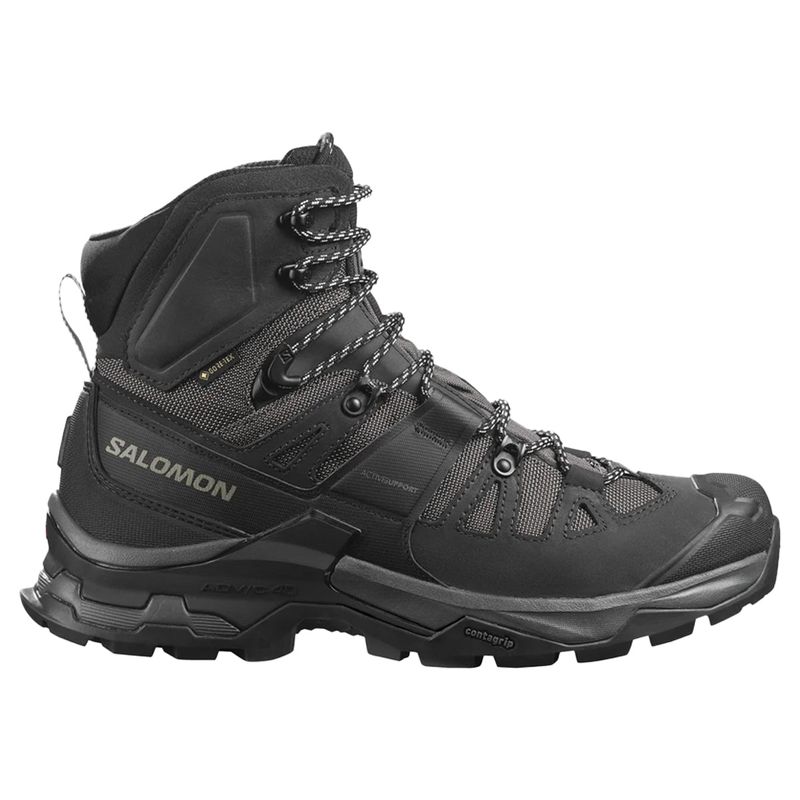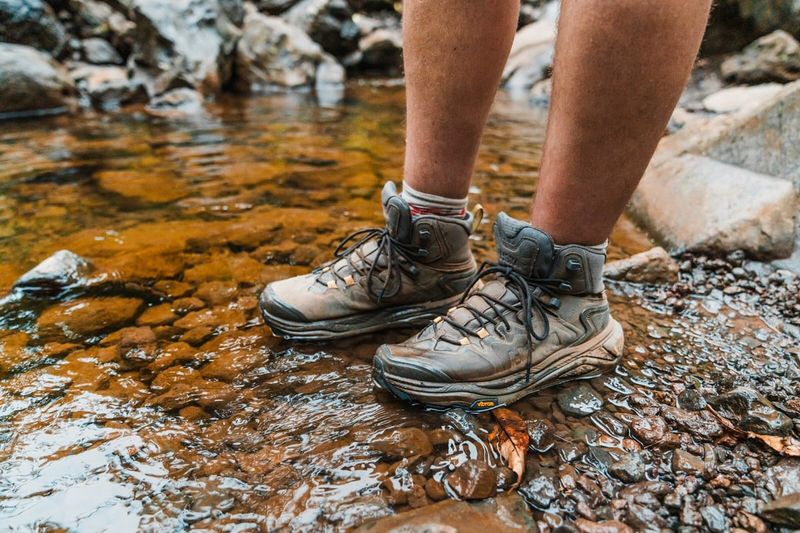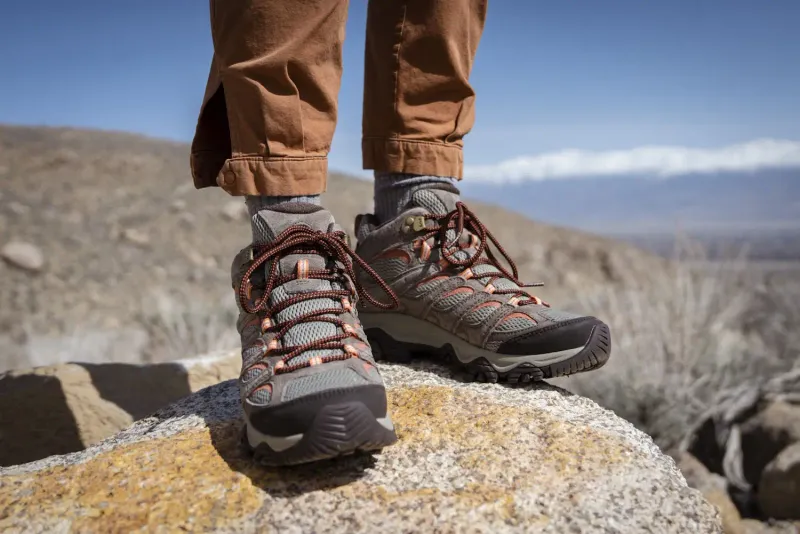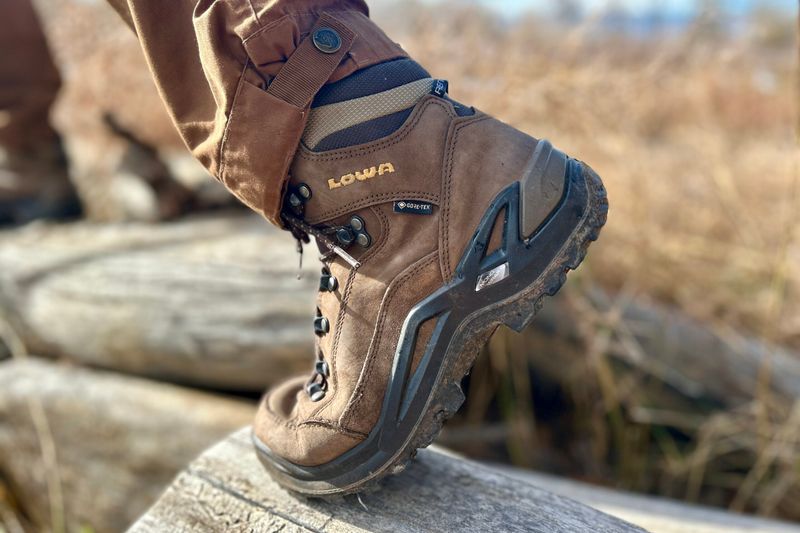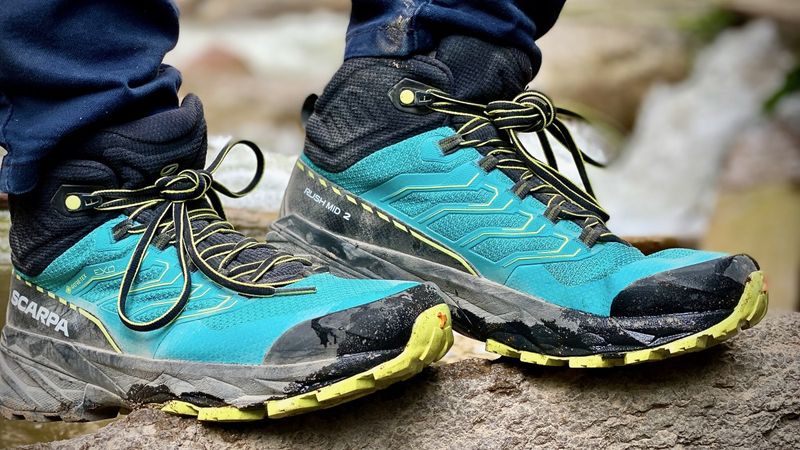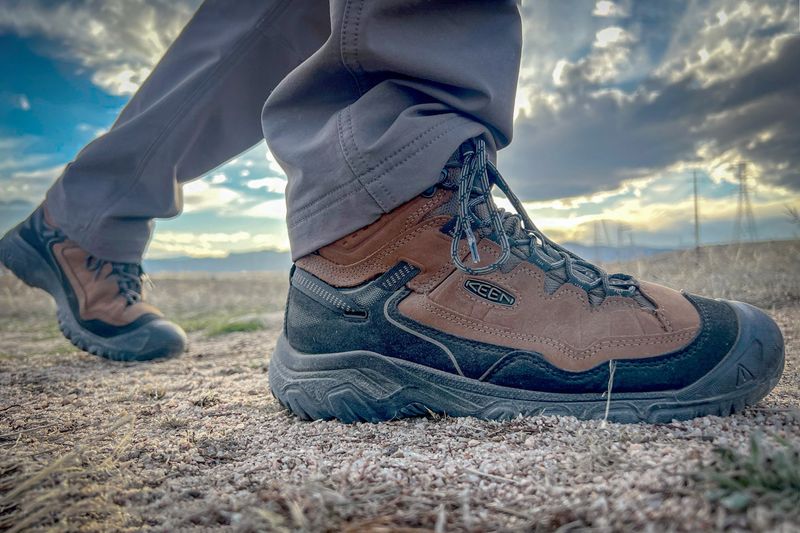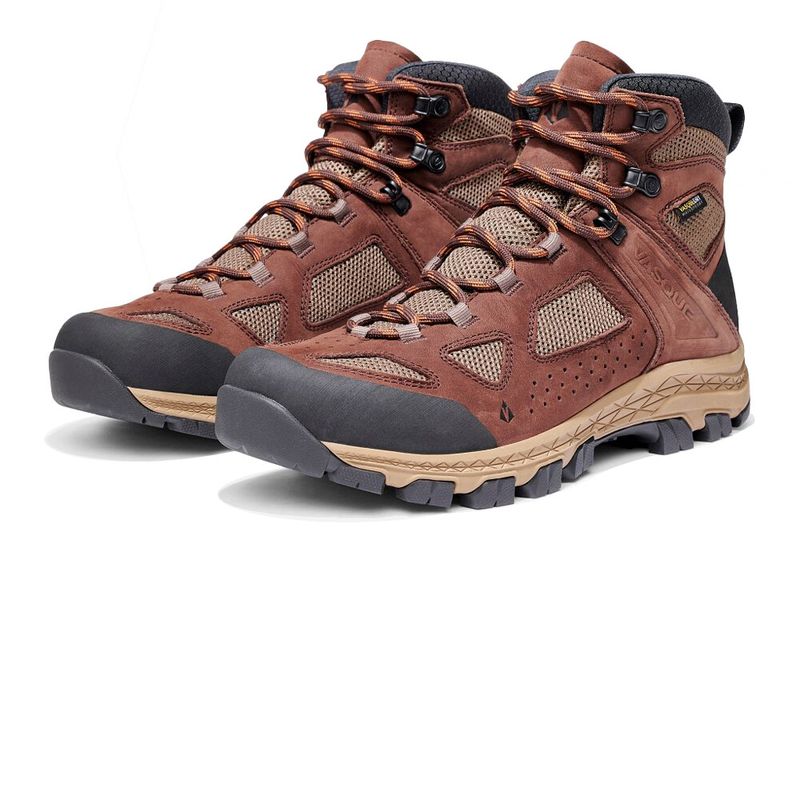November mountain trips demand gear that can handle cold temperatures, unpredictable weather, and rugged trails. The right hiking boots make all the difference between an amazing adventure and sore, wet feet that ruin your journey. Whether you’re planning a weekend trek through snowy peaks or a challenging multi-day expedition, choosing boots with proper support, waterproofing, and traction will keep you comfortable and safe on the trail.
Salomon Quest 4 GTX
Serious mountain hikers consistently vote this boot to the top of their lists, and it’s easy to see why. Built with exceptional ankle support and GORE-TEX waterproof protection, it tackles everything from slippery stream crossings to snow-dusted ridgelines. The rugged outsole grips mixed terrain like a champion, giving you confidence on loose rocks and steep descents.
Carrying a heavy pack? This boot won’t let you down. Its structure handles substantial weight without compromising stability, making it ideal for multi-day trips where you’re loaded with gear.
Fair warning: these boots aren’t featherweights. Ultralight hikers might find them bulkier than preferred, but if you prioritize protection and durability over ounces, you’ll appreciate every gram.
Hoka Kaha 3 GTX
Imagine walking on clouds while conquering challenging peaks—that’s the Kaha 3 GTX experience. Rated as a top overall performer in recent boot tests, this model combines plush cushioning with remarkable stability. Your feet will thank you after twelve-hour days navigating rocky switchbacks and uneven ridgelines.
The high-stability design keeps your ankles protected even when carrying substantial weight across demanding terrain. Whether you’re boulder-hopping or descending scree fields, the under-foot comfort remains exceptional throughout your journey.
The catch? Premium performance comes with a premium price tag. Additionally, these boots sacrifice some nimbleness compared to ultra-light alternatives, so speed-focused hikers might want something more agile for quick mountain jaunts.
Merrell Moab 3 Mid GTX
Budget-conscious adventurers, meet your new best friend. The Moab 3 delivers solid mountain performance without emptying your wallet, earning its reputation as a standout value pick. Comfort, durability, and reliable traction come together in a package that won’t make you choose between quality and affordability.
Versatility shines here—these boots handle varied mountain conditions admirably, from dry ridges to muddy forest approaches. They’re particularly great for hikers who want one dependable boot for different trail types rather than specialized footwear for each adventure.
The lighter construction means you won’t get quite the same extreme ruggedness as pricier heavy-duty options. For most mountain hikes though, this trade-off makes perfect sense, especially when saving money for other gear upgrades.
La Sportiva Ultra Raptor II Mid GTX
Technical terrain separates ordinary boots from exceptional ones, and the Ultra Raptor II thrives where others struggle. Scree fields, steep ascents, and sketchy rock scrambles become manageable challenges rather than dangerous obstacles. The aggressive traction system grips surfaces that would send lesser boots sliding backward.
Mountain trips involving varied elevations and mixed surfaces benefit enormously from this boot’s capabilities. The stretch fit accommodates foot swelling during long days while maintaining security around your heel and midfoot for precise control.
Here’s something important: La Sportiva runs narrower than many brands. People with wider feet often find the fit uncomfortable, so definitely try these on before committing. Sizing up might help, but test them thoroughly with your typical hiking socks first.
Lowa Renegade EVO GTX
Balance defines the Renegade EVO perfectly—it sits right in the sweet spot between ultra-light flexibility and heavy-duty protection. Expert testers consistently praise its combination of durability, comfort, and support across mountainous terrain. You get serious performance without feeling like you’re lifting ankle weights with every step.
The construction quality shows in the details, from reinforced high-wear areas to thoughtful lacing systems that distribute pressure evenly. These boots break in reasonably quickly while maintaining the structure needed for challenging mountain environments.
Speed demons and minimalist hikers might find them heavier than desired for fast-and-light missions. However, for traditional mountain hiking with moderate to heavy packs, the weight trades favorably for the confidence-inspiring support and longevity you receive.
Scarpa Rush 2 Mid GTX
Who says mountain boots can’t look good? The Rush 2 breaks stereotypes by combining serious mountain capability with style that doesn’t scream “hardcore hiker” when you stop for lunch in town. This dual-purpose design appeals to adventurers whose trips blend backcountry challenges with more civilized stops.
Don’t let the good looks fool you—underneath the attractive exterior lies genuinely rugged construction. The mountain-grade build handles demanding trails, unpredictable weather, and heavy use season after season. GORE-TEX keeps your feet dry through November’s mix of rain, slush, and snow.
Expect to invest more money upfront, and plan for a break-in period before tackling major expeditions. Your feet will need time to mold the boots properly, so wear them around town first before heading into serious mountain territory.
Oboz Katabatic LT Mid GTX
Fast-paced mountain adventures call for nimble footwear, and the Katabatic LT delivers exactly that. Designed for lighter-pack trekkers who cover serious miles across varied terrain, these boots prioritize agility without sacrificing essential durability. Multiple-day trips feel less exhausting when your boots don’t weigh you down unnecessarily.
The “LT” designation signals the lighter construction, which translates to quicker footwork on technical sections and less fatigue over long distances. You’ll appreciate the responsive feel when hopping between rocks or adjusting your footing on steep grades.
Trade-offs exist, naturally. The lighter build may show wear faster on extremely rugged terrain compared to burlier boots. For most mountain hikers though, especially those who value speed and efficiency, this compromise makes perfect sense given the performance benefits you gain.
Keen Targhee IV WP
Wider feet often struggle with hiking boots, but the Targhee IV offers a refreshingly accommodating fit. While categorized more as a general hiking boot, it performs admirably on moderate mountain terrain throughout 2025 testing. The forgiving shape reduces pressure points that plague hikers with broader feet or those who need extra toe room.
Mixed travel between mountain approaches and established trails suits this boot perfectly. The waterproof construction keeps November moisture at bay, while the comfortable design encourages longer adventures without painful hotspots developing midway through your day.
Extremely technical mountain terrain might exceed this boot’s optimal capabilities. If your route includes lots of steep scrambling or sustained rough conditions, consider something with more rigid support. For typical mountain hiking though, the Targhee IV provides excellent comfort and reliability.
Inov-8 Roclite Pro G 400 GTX V2
Steep, rocky, slippery—these words describe where the Roclite Pro G 400 absolutely shines. The grip technology performs almost supernaturally well on challenging surfaces, earning high marks in mountain boot performance categories. Technical features abound, making this a specialist’s choice for demanding conditions.
Mountainous terrain with significant technical challenges benefits most from this boot’s capabilities. Where others slip and slide, the Roclite Pro maintains traction, giving you confidence to tackle routes that might otherwise feel too sketchy. The rugged construction withstands punishment from sharp rocks and rough surfaces.
Two important considerations: the fit runs narrow, potentially uncomfortable for wider feet, and the technical focus might be excessive for gentler mountain walks. If your November plans involve truly challenging terrain though, you’ll appreciate having this level of performance underfoot.
Vasque Breeze
Sometimes the traditional approach works best, and the Vasque Breeze represents exactly that philosophy. Featured in respected mountain boot lists, this tried-and-tested design has earned its reputation through years of solid performance across diverse conditions. When you need a dependable all-rounder without trendy gimmicks, this boot delivers.
The traditional mountain boot construction provides reliable support, adequate protection, and reasonable comfort for typical November mountain trips. Nothing flashy, nothing revolutionary—just honest performance that gets hikers safely up and down mountains season after season.
Modern ultra-light features found in newer designs don’t appear here, which some hikers will view as a drawback. However, if you appreciate classic boot construction and proven reliability over cutting-edge materials and weight savings, the Breeze remains a solid mountain trip companion worth considering.

